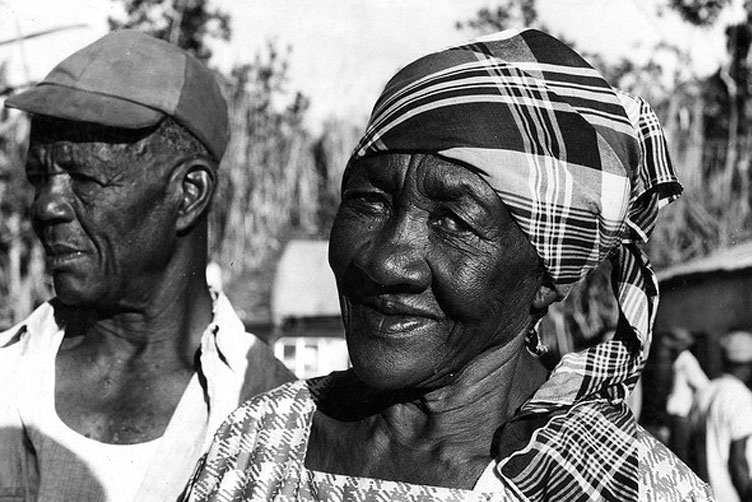When the plantocracy embarked on the Akan region of West Africa, they specifically sought out and purchased ‘Koromantis’ (also referred to as Coromantees) because of their renowned characteristics of pride and discipline. While slave owners hoped that these aforementioned characteristics would make their newly acquired ‘property’ “good slaves” because they were known to be hard workers, they overlooked the fact that these people were also known to be very stubborn and possessed superb military skills because of the fights they endured in their native countries. While not taking heed to these latter facts, slave owners/planters in Jamaica would eventually regret their choice of purchase as many of their hopeful “good slaves” would become their greatest threat.
With their weapons and manpower, the British were able to capture the island of Jamaica from the Spanish in 1655. Noticing this break of control, many slaves took the opportunity to rebel, flee and seek refuge in the north and east side of the mountains, where it was difficult for the incoming colonial masters to reach them. With the help of the native Taino and Arawak populations, African slaves would utilize the skills and practices brought with them from their native African countries, to establish thriving, disciplined, independent communities.

Maroons of Jamaica Photo By National Library of Jamaica
These escaped salves inherited the name Maroons, which is derived from the Spanish word “cimarrones” meaning “unruly, fugitive or wild.” Being the exactly opposite of the intended meaning of their name, Maroons in Jamaica were highly skilled, clever, organized and courageous men and women, who, despite being forced to unfamiliar lands, were able to easily adapt and make use of their new environment. They were also able to preserve and utilize the culture and skills bestowed upon them by their African culture and ancestors to resist the grasp of slavery and bondage.
Initially, Maroons composed of various groups including the Clarendon, Cottawood, Madagascars and Accompong groups – each possessing and preserving their own name and language. However, due to the need for easy communication and integration, these groups will forge together and will all speak the Coromantee language which is directly linked to the Akan people of West Africa- presently known as Ghana. Despite the efforts of colonialism to stripe slave populations of their native languages, culture and practices, Maroons were able to preserve their ancestral languages by modifying it to accommodate to their new environment – which required communication with other slaves, who possessed different languages. Despite this modification, Maroons language still incorporated many elements of their native African language, thereby making it easy to link to their ancestry and culture. The preservation of their ancestral language was mostly exemplified among Maroon populations by the names they used. Much like their Akan/West African ancestors, “day names” were dominant among Maroons. Revered and celebrated Maroon leader Cudjoe’s name was derived from the Akan/West African custom o f day name for Monday. Referred to as Kwadwo/Kojo in Akan custom, Cudjoe the “day name” for Monday means “strong headed” – which was a characteristic of the Maroon leader.
The Maroon also used various instruments inherited from theri African ancestors including the Central African lute and eight-stringed harp (also known as the Koromanti instrument). The horn or Abeng, which is still used today among many native West Africans, was also used for far away communication among Maroons. The use of various hers and practices, including “Obi” – which is now known as a sort of witchcraft called obeah was also inherited from their African ancestors and used by the Maroons against British plantation owners, who became fearful of the perceived powers obeah practitioners possessed.
Known for their tall, strong muscular structures, Maroons occupied interior mountainous regions of Jamaica, which made it difficult for British planters to reach them. They sustained themselves by hunting and by breeding and raising various livestock including cattle and fowls. Living in these mountainous interiors and being out of the reach of the plantocracy and thus slavery, the Maroons virtually lived as an independent people. However, they often fought against planters and slavery by recruiting and granting refuge to escaped slaves, plundering plantations and destroying planter’s livestock. In addition to their direct actions against plantation life and slavery, they also stood of a symbol of freedom and hope for their enslaved brothers and sisters. Recognizing the Maroon’s existence as a threat to their structure and luxurious way of living, planters called upon the British legislation to take action and embarked on a vicious attack against the Maroons.
Equipped with the confidence, military skills and warfare bestowed upon them by their African culture and identity, which made impervious to the sense of inferiority imposed upon them by slavery and colonialism, the Maroons, lead by their fearless leaders Cudjoe and Queen Nanny, fought against the English planters and militia who threatened their way of living and freedom. This culminated in the first Maroon War of 1720-178. Realizing their strength and skills, the British had no choice but to seek a truce with the Maroons and their “bold, skilful and enterprising “leader Cudjoe, which resulted in a peace treaty by the two parties in 1738. Although the treaty outlined certain provisions to ensure the maintenance of peace, including to Maroons agreeing not to assist runaway slaves, full freedom from British occupation and control and the granting of land, conflict still ensued, as both parties found it hard to maintain their side of the deal.
The ensuing conflict, will eventually lead to the second Maroon war in 1795 with the coming of a new governor, who made it his mandate to mistreat and provoke the Maroons. Given their strong cultural identities and background, the Maroons once against resisted against the encroachment upon their freedom and identity, but with the exception of the Accompong Maroons, who remained neutral in the fight, they were outnumbered and defeated and despite having a second treaty with the British not to be exported, over 600 Maroons, were sent to Nova Scotia, Canada. The British rationalized their actions as a means of “getting rid of the problem.”
The Jamaican Maroons not only stood as a symbol of freedom for their enslaved Jamaican counterparts, but to slaves throughout the Americas. Their defence, preservation and reliance upon their rich and powerful African heritage, culture and identity equipped them with confidence and skills needed to resist and counter the mechanisms of slavery.

Maroons of Jamaica Photo By National Library of Jamaica
Latest posts by Nekita (see all)
- Before Rihanna there was Grace Jones - December 27, 2014
- Marimba: Expression of Freedom, yet my Afro-Ecuadorians… - December 25, 2014
- Who Makes Claim to Being the Reggae Capital of the World? - December 24, 2014



